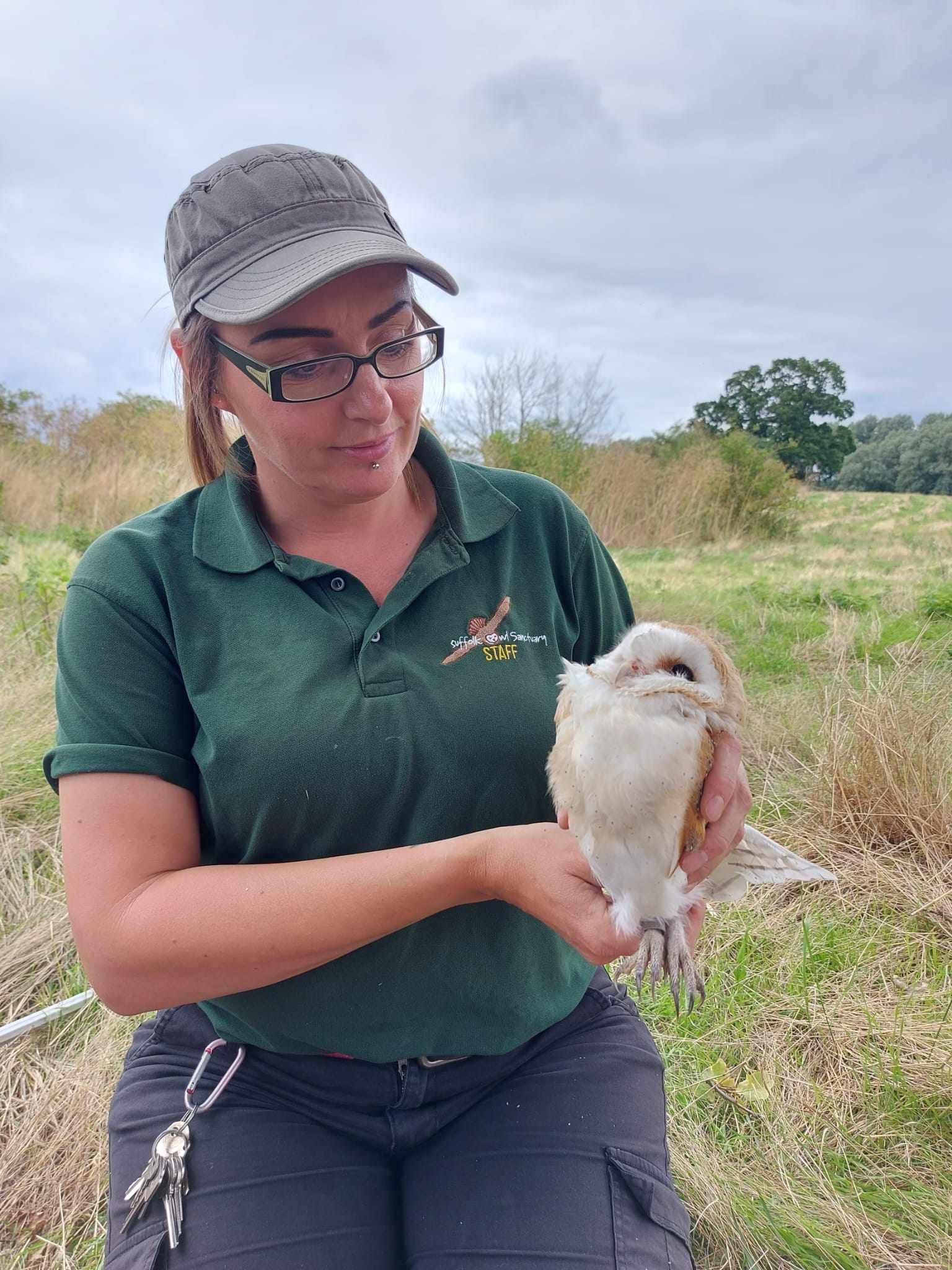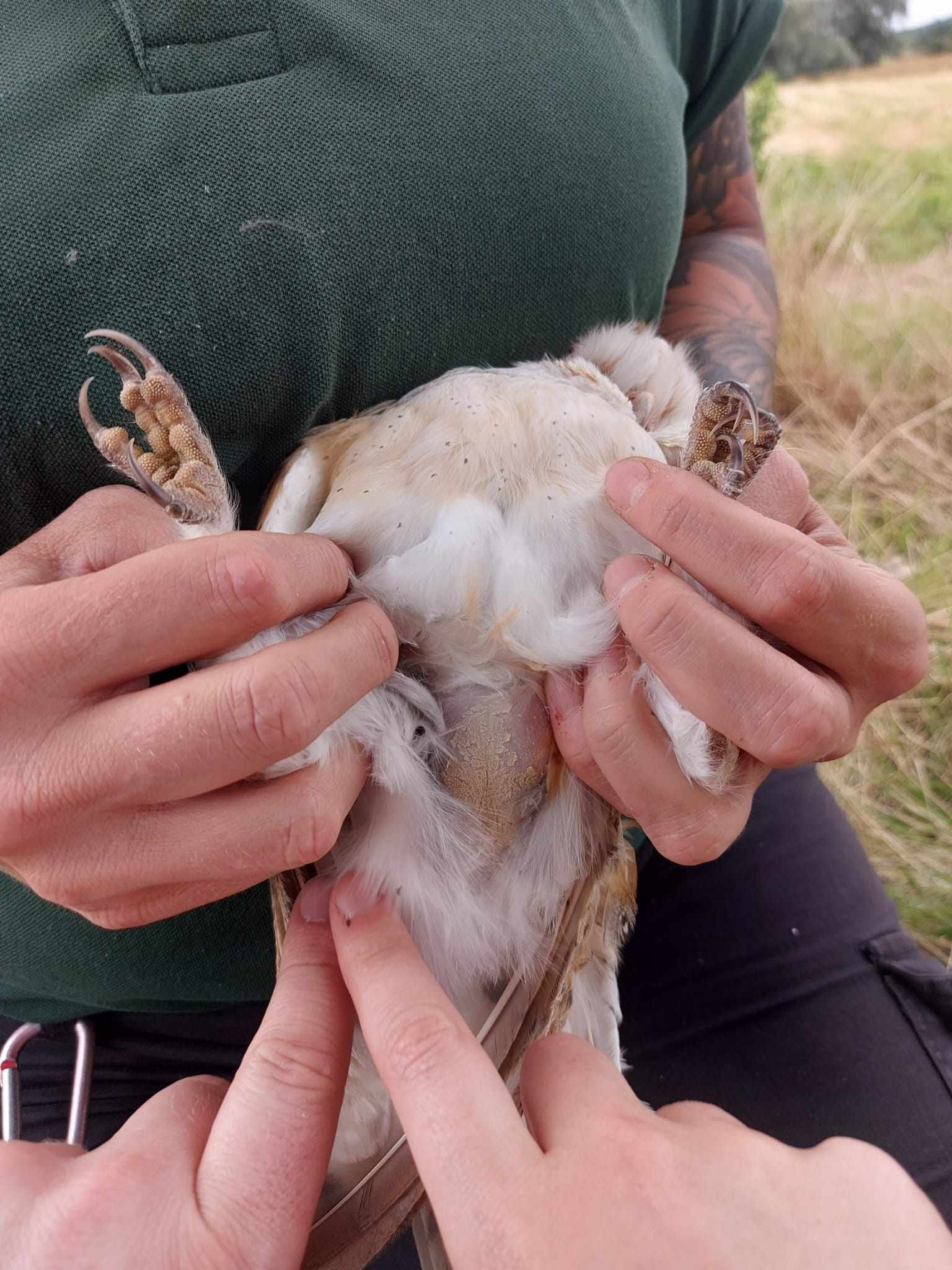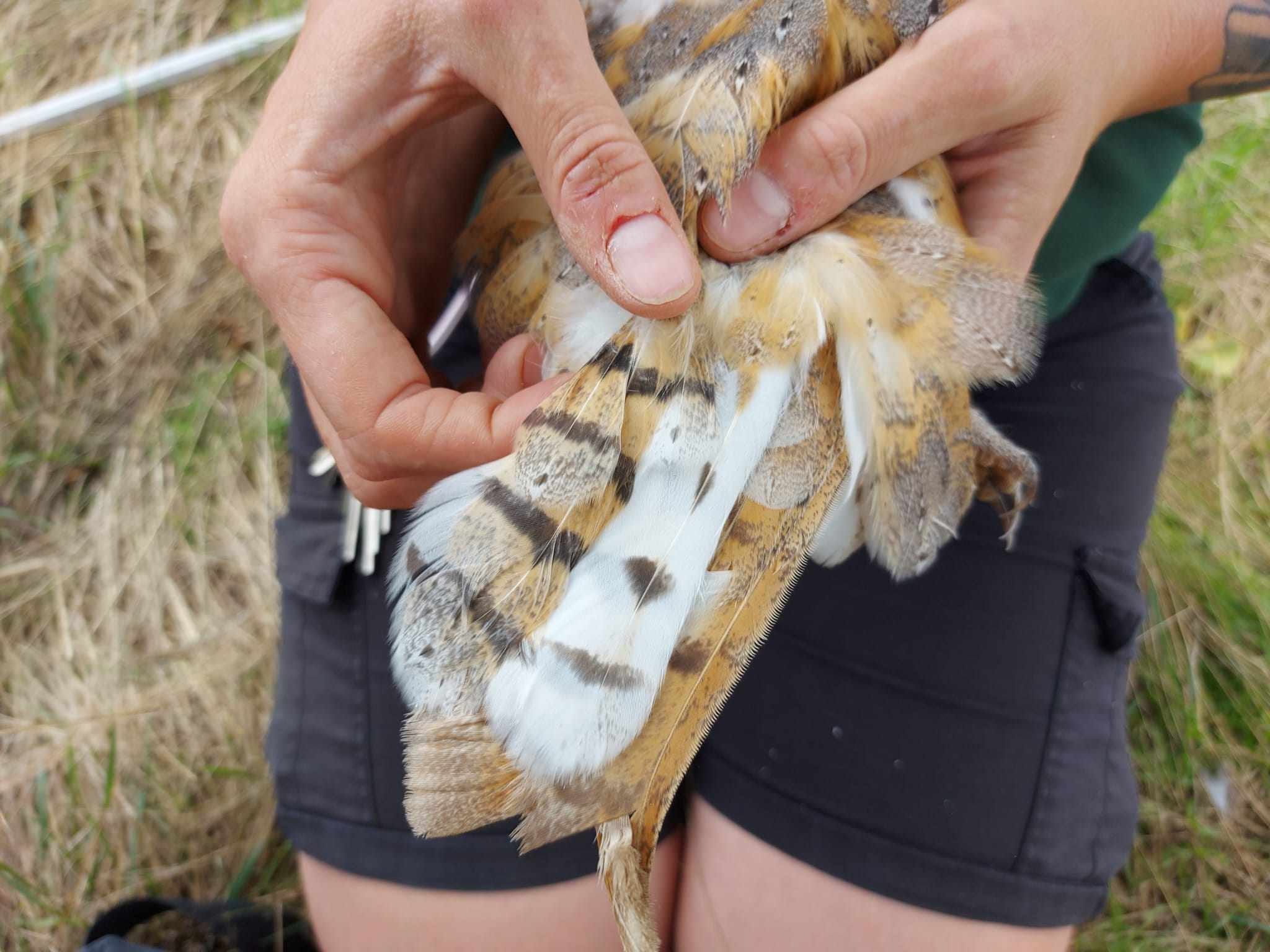Last week, Jess and Susan were joined by Dr Hugh Hanmer from the BTO to do another check of some of our Barn Owl nest boxes.
We travelled up to the Waveney Valley where were knew of two nests which should have contained ringable chicks. The first was in a field with cows, so we had to wait for the farmer to escort us to the box. He said he’d popped round the night before and was concerned that he couldn’t hear any activity. Hugh placed the ladder against the tree, and out of the box flew a Stock Dove. Considering there should have been a large Barn Owl chick in the box, this didn’t bode well. When Hugh opened the box, he found 2 Stock Dove eggs in one corner, and the remains of a Barn Owl chick in the opposite. The chick had been dead for about a week, given the state of decomposition, but there was no evidence of predation. We suspect that it was a single parent who was struggling to find enough food to feed themselves plus the growing chick.
The next box we had previously checked a few weeks ago and found 4 eggs. This nest is being closely monitored using cameras and over the past few weeks we’ve had regular updates on the activity. In the past week or so, activity seemed to have tailed off, which was concerning as we expected the chicks to have hatched and be demanding food. Again, when Hugh positioned the ladder a Stock Dove flew out. In the box, Hugh found 3 of the Owl eggs in one corner and 2 Stock Dove eggs in another. This suggests that the eggs were not fertile. We know from the cameras that the female is wearing a ring and that she hatched on a nearby farm last year, so it could be that she needs a little more experience. If the weather holds, she may attempt to breed later in the summer. However, given the difficulties we’ve seen in our Raptor Hospital this year, concerning young birds in starving conditions, we don’t think there is much food available for them.
The team then headed south, checking boxes along the way. One of these contained a large Stock Dove chick, which gave Jess some experience ringing a non-raptor species.
Jess ringing a young Stock Dove - her first non-raptor.
Kestrel pellets and remains of breakfast
Another box looked very promising with several small pellets and a couple of dead juvenile voles on the ground beneath it. As we got the ladder into position, a female Kestrel flew from a neighbouring tree and flew across the field toward some telegraph poles opposite. With Hugh up the ladder, Jess spotted 3 young Kestrels on the telegraph posts, and Hugh confirmed that the box had been recently vacated. We suspect that the Kestrels fledged a short while ago but are still using the box to roost in.
Later in the afternoon, we’d made our way back down to near SOS to check one last box. This box is not in what we would consider an ideal location, as it is sandwiched between the main London- Norwich trainline and the busy A14 dual carriageway. Upon approach, we saw a Kestrel fly out of the tree, and a number of Jackdaws were also sitting in the upper branches. Given our track record for the day, we were feeling a little pessimistic. Jess approached the box with a net and placed it over the entrance, just in case anyone was home. Before Hugh and Susan had got the ladder in place, out flew a Barn Owl, which Jess expertly captured. Unfortunately, the net wasn’t big enough to catch the second Barn Owl which flew out a few seconds later! The Owl was carefully extracted from the net and placed into a bag while Hugh checked the box, which was empty. Jess had already seen that the bird was ringed, but as she read the number, we all looked at each-other - that sounded familiar! Hugh checked through his book where he keeps all ringing data before submitting, and discovered that this bird was one of a couple of Barn Owls that we had in our Raptor Hospital last year, as chicks. They had been ringed before moving to a hack pen locally.



Once we had all stopped grinning with excitement, Jess continued to take biometric measurements on the Owl, including a weight, wing length. She also had a brood patch, which tells us that she has definitely attempted to breed this year, and was starting to moult her feathers! We assume that the other Owl was her mate, who flew off into some large Willow trees near the river. After the female was returned to the box, we went on an exploratory hike to see if we could locate a couple of “missing” boxes on the other side of the river. We found one which had a large squirrel drey inside, but the other couldn’t be found. So wherever she was nesting must be in a natural hole!
This was a massive boost for the team after a disappointing start to the day. It confirms that the work we do in the Raptor Hospital and our Hack Pens works to support young birds after release. This female had flown about 5 miles from her release site, which is about average for Barn Owl dispersal, but had made it across the A14, which is an incredibly dangerous barrier for wildlife, and the cause of many of our Hospital intakes.
Through ringing our Raptor Hospital patients before release, we hope to find more Owls and Kestrels breeding locally in nest boxes monitored by ourselves, or other groups in the future!


